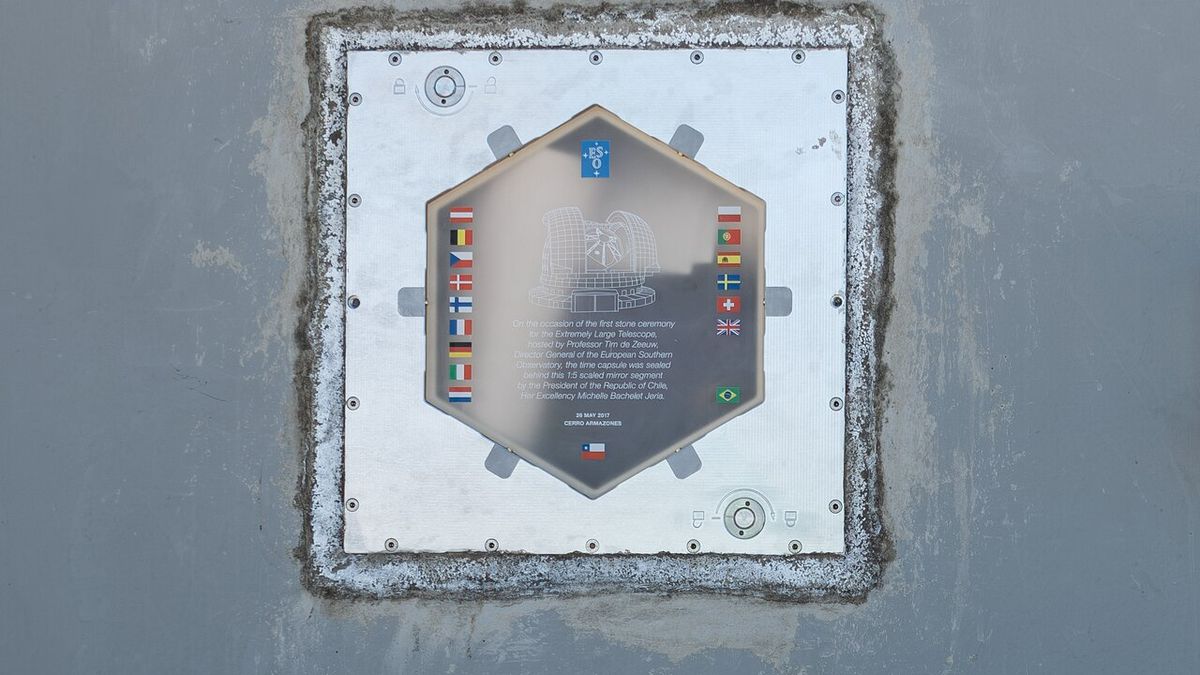A momentous occasion took place at the construction site of the future world’s largest visible and infrared light telescope. On October 13th, the European Southern Observatory (ESO) celebrated its upcoming Extremely Large Telescope (ETL) by burying a time capsule that had been sealed in 2017 when construction first began. This time capsule is filled with various items that commemorate the ESO staff, the collaboration between the observatory and Chile, and the incredible science and technology behind the 39.3-meter telescope.
The significance of this time capsule lies in its role as a symbolic message to future generations. It contains mementos from Chilean authorities, including a plaque from the former President of Chile, Michelle Bachelet Jeria, emphasizing the importance of opening the skies of the country to the curiosity of the entire planet. Additionally, the time capsule holds drawings from Chilean children, depicting the Universe, ESO telescopes, and the breathtaking landscapes of northern Chile.
The time capsule was buried within the concrete of the ELT dome on October 13th by ESO Council President Linda Tacconi and Vice-President Mirjam Lieshout-Vijverberg. Alongside photographs of ESO staff, a book describing the future scientific goals of the ELT was also preserved within the time capsule. The ELT is expected to achieve its “first light” by 2028.
Nestled within the walls of the ELT dome on Cerro Armazones in the Chilean Atacama Desert, where the ESO currently operates its Very Large Telescope (VLT), the time capsule was concealed beneath an engraved hexagon. This hexagon is a one-fifth-scale model of one of the ELT’s primary mirror segments. A few days after the burial of the time capsule, on October 15th, ESO Council members placed a commemorative plaque adjacent to its location, further solidifying the significance of this event.
As of July, the ELT has reached its halfway point in construction and is set to be completed in 2028. Although it currently appears as a steel structure, it will eventually house five separate mirrors, with the largest comprised of 798 individual hexagonal segments. The observatory itself will stand an impressive 80 meters (262 feet) tall.
The ELT will have a width of 39.3 meters (120 feet), allowing it to capture more light than current ground-based telescopes. This capability will result in sharper images of the cosmos, potentially aiding in the search for extraterrestrial life and providing new insights into the nature of dark matter and dark energy. The ESO officials state that, as the largest optical and infrared telescope in the world, the ELT will revolutionize our understanding of the universe. Its scientific goals span from studying the solar system to exploring the farthest reaches of the observable universe, including exoplanets, black holes, and the earliest stars and galaxies.


